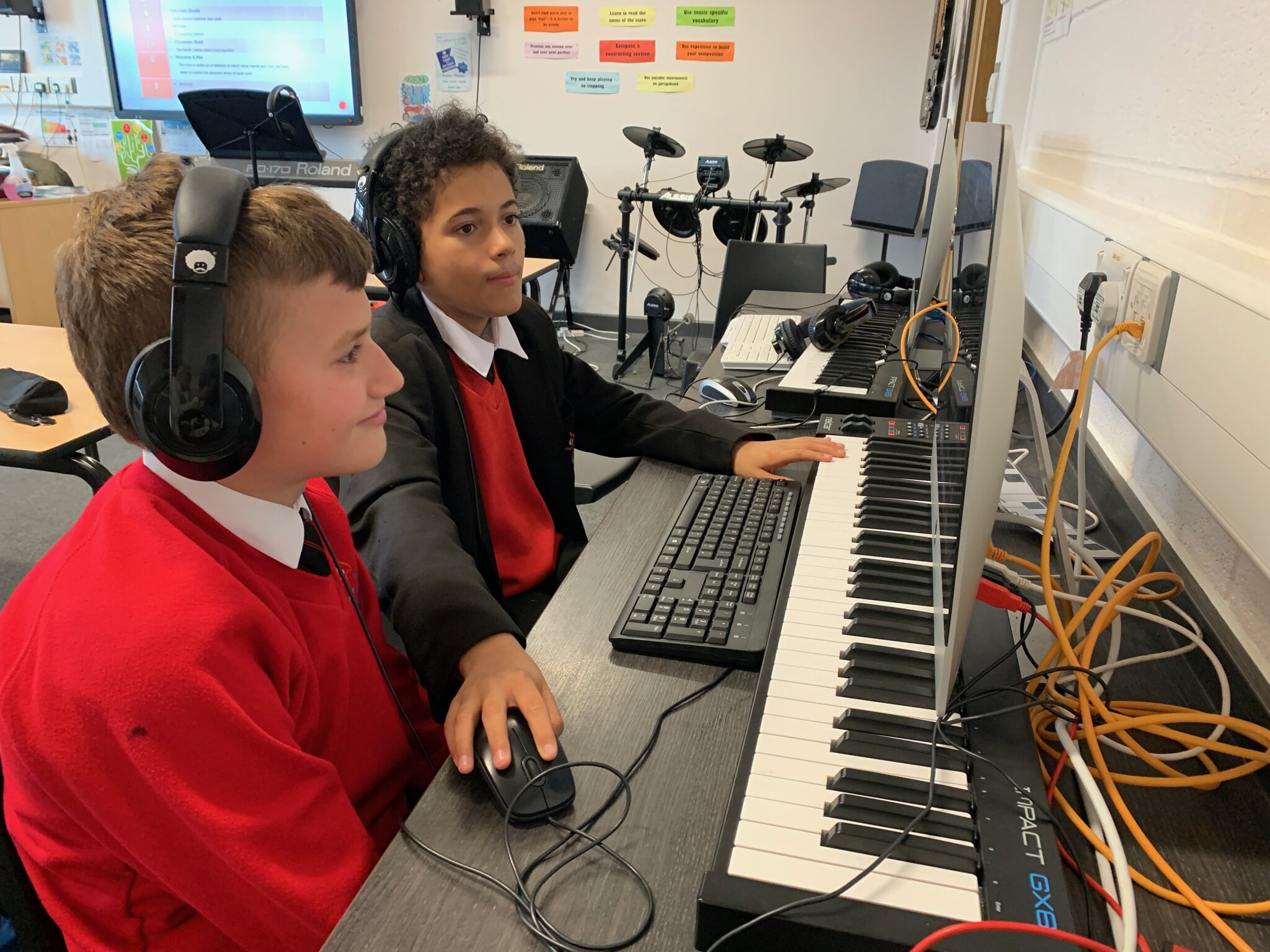
Curriculum Intent
At Werneth School we recognise that music is a powerful, unique form of communication that can change the way pupils feel, think and act. It brings together intellect and feeling and enables personal expression, reflection and emotional development.
Our curriculum is intended to build on their musical skills and allow students to develop their own personal musical interests as well as introduce them to musical styles and genres from different cultures and different times.
Curriculum Features
Our Music curriculum is designed to help students:
- Develop a thorough understanding of music, through;
- Building to confident performances
- Developing composing by encouraging creativity and learning compositional techniques
- Analysing music and being able to listen to music objectively.
- Develop self-confidence and sense of achievement through performance, both through lessons and extra-curricular participation
- Encourage creativity through composition skills
- Understand the complexities of music through analysis of a wide range of genres from different musical and cultural perspectives
- Encourage personal development through ensemble performances and group compositions
- Understand how music can support the development of life skills, such as confidence, self awareness, perseverance and discipline and provide a holistic experience that they can take beyond their musical studies
- Develop their cross-curricular skills of problem solving, perseverance, diligence, team work, time management, organisation, responsibility and cultural history
Gain real world skills in using music technology to be able to create music that responds to a variety of stimuli.
Music Development Plan - Please click here
|
Curriculum overview: Y7: Music Y7 Progression Grids
Y8:
Y9:
|
||||||||||||||||||||||||||||||||||||||||||||||||||||||||||||||||||||||||||||||||||||||||||||||||||||||||||||||||||||||||||
|
GCSE Exam Information: OCR GCSE Music (J536); Performing & Composing Portfolio (60%) / Listening Exam (40%) |
||||||||||||||||||||||||||||||||||||||||||||||||||||||||||||||||||||||||||||||||||||||||||||||||||||||||||||||||||||||||||
|
Useful links: Quizlet / YouTube / musictheory.net |
||||||||||||||||||||||||||||||||||||||||||||||||||||||||||||||||||||||||||||||||||||||||||||||||||||||||||||||||||||||||||
|
Gallery / video / powerpoint about the subject |
||||||||||||||||||||||||||||||||||||||||||||||||||||||||||||||||||||||||||||||||||||||||||||||||||||||||||||||||||||||||||
KS4
|
Curriculum Intent: The Music Department aims to provide students with a rewarding and enjoyable experience which enables them to become better musicians. We will develop their level of performance, enable them to compose high quality pieces and be able to describe music from a range of genres taken from around the world and periods in time. Time is also given over to developing students' broader musicianship and aural skills.
The curriculum is taught by interleaving the different listening topics alongside performing and composing work. Students will work individually, in small groups and in whole class projects.
Curriculum Features:
|
||||||||||||||||||||||||||||||||||||||||||||||||||||||||||||||||
|
Curriculum overview: Y10:
Y11:
|
||||||||||||||||||||||||||||||||||||||||||||||||||||||||||||||||
GCSE Exam Information: OCR GCSE Music (J536); Performing & Composing Portfolio (60%) / Listening Exam (40%)
Curriculum Intent
Dance is a hidden language that not only allows us to express our ideas and emotions in a different approach but also allows us to build lifelong skills of communication, creativity, teamwork and independence. Every young person has the opportunity to access dance as not only an art form but also as an alternative healthy lifestyle approach. Our curriculum aims to provide enriched opportunities for each and every student to gain skills for life and learn to appreciate dance from all over the world and its place in society.
Curriculum Features
- Develop competence to excel in dance and develop confidence over time
- Students are physically active for sustained periods of time
- Promote healthy, active lives with the understanding what long term benefits of a healthy lifestyle are, building an interest to get involved with exercise both in and out of school
- Students to look at different dance cultures, history and its place in current society
- Build creative thinkers
- Build problem solvers and critical thinkers
- Be self-reflectors and have the ability to form opinions
- Build interpersonal and transferable skills such as; teamwork, leadership and independence
- Build appreciation skills
- Promote self-discipline
- Develop transferable skills
Overview
Students have 1 lesson of dance every 2 weeks
Year 7
Dance Y7 Progression Grid Link
|
|
Autumn 7 lessons
|
Spring 5 lessons |
Summer 6 lessons |
|||
|
Area of study: |
The elements of dance |
The elements of dance |
Narrative Dance |
Narrative Dance |
Abstract dance |
Musical Theatre |
|
What should they know? |
Students will study… The importance of warm up Safe Practice in the studio The basic elements of RADS (Relationship, Actions, Dynamics, Space) . |
Students will study…. The basic elements of dance (RADS) to give them the core principles to be successful through the KS3 curriculum. |
Students will study…. Charlie Chaplin and how characterisation can be shown through the use of gestures. |
Students will study…. The Bogey Man and how it can be used as a stimulus for dance. |
Students will study…Shipwrecked as a stimulus for creating abstract dances. |
Students will study…. Matilda the musical and will look at ‘Revolting children’. |
|
What should they be able to do? |
Students will be able to…Follow a teacher taught warm up, they should be able to recall some key facts about how we warm up and why we warm up. |
Students will be able to…copy a simple dance motif. Students should be able to create simple motifs using action, space, dynamics, unison, canon, transitions and formations. |
Students will be able to… Perform a teacher motif based on the characters from silent movies. Students will be able to create a short narrative dance using the characters from silent movies. |
Students will be able to…Perform a teacher taught motif based on the character. Students should be able to create 2 short sections of movement based on a given stimulus. |
Students should be able to…. Perform a teacher taught motif based on the stimulus. Students should be able to create a short dance using the game shipwrecked as a stimulus. |
Students should be able to…. Perform a teacher taught motif and apply mirroring and motif development techniques to the movement phrases. |
|
Key vocabulary |
Mobilisation, Pulse Raiser, Stretching, Flexibility, Muscles, Heart rate, joints, Oxygen (oxygenated), energy |
Continuation of Autumn 1 keywords plus: Action Space (levels/direction) Dynamics Relationship Motif Unison Canon Formation Transition Choreograph
Performance skills |
Continuation of Autumn keywords plus: Narrative dance Stimulus Character Gesture
Performance skills |
Continuation of Autumn and Spring keywords plus: Section
Performance skills |
Continuation of Autumn and Spring keywords plus: Abstract
Performance skills |
Continuation of Autumn and Spring keywords plus: Mirroring
Performance skills |
|
Assessment |
Formative assessment within lessons. Peer and self-assessment |
Performance of choreographed motif using RADS and choreographic devices |
Formative assessment of performance and choreography of Charlie Chaplin narrative dance |
Summative assessment of performance and choreography of The Bogey Man Narrative dance |
Choreography of Shipwrecked dance. |
Performance of revolting children. |
Year 8
|
|
Autumn 7 lessons |
Spring 5 lessons |
Summer 6 lessons |
|||
|
Area of study: |
Dance styles Physical Theatre |
Dance styles Physical Theatre |
Dance styles Musical Theatre |
Dance styles Musical Theatre |
Dance styles Cultural dance:
|
Dance styles Cultural dance: |
|
What should they know? |
Students will study… How to perform physical theatre contact work safely Performance Skills |
Students will study…Using the titanic as a starting point for creative work. |
Students will study…repertoire from famous musical theatre shows. Grease and Hairspray. |
Students will study…repertoire from famous musical theatre shows. Grease and Hairspray. |
Students will study… a range of cultural dances across the term. They will study The Haka, Bollywood and Street Dance. |
Students will study… a range of cultural dances across the term. They will study The Haka, Bollywood and Street Dance. |
|
What should they be able to do? |
Students will be able to… Create more complex dance ideas using physical theatre techniques |
Students will be able to… Create more complex dance ideas using physical theatre techniques to create a short dance based on the stimulus titanic. |
Students will be able to… perform repertoire from the musical. Students should be able to develop ideas using their knowledge of the musical and using techniques learnt in the autumn term. |
Students will be able to…. perform an extended piece of repertoire ’Nicest kids in town’ in an ensemble. |
Students will be able to…. Perform dances in a range of different styles, they will be able to contribute ideas to whole class choreography and group dances. |
Students will be able to…. Perform dances in a range of different styles, they will be able to contribute ideas to whole class choreography and group dances. |
|
Key vocabulary |
Counter Balance Counter Tension Taking Weight Lift Stimulus Continuation of key vocabulary from year 7 curriculum |
Counter Balance Counter Tension Taking Weight Lift Stimulus Continuation of key vocabulary from year 7 curriculum |
Musical Theatre Repertoire Develop Continuation of key vocabulary from year 7 curriculum and Autumn term |
Musical Theatre Repertoire Ensemble Continuation of key vocabulary from year 7 curriculum and Autumn term |
Culture Stylistic features Continuation of key vocabulary from year 7 curriculum and Autumn and spring term |
Culture Stylistic features Continuation of key vocabulary from year 7 curriculum and Autumn and spring term |
|
Assessment |
Formative assessment in lessons. |
Performance and choreography of physical theatre pieces. |
Performance of teacher taught repertoire. |
Performance of teacher taught repertoire. |
Formative assessment in lessons. |
Summative Assessment: Performance of your chosen style. |
Year 9
|
|
Autumn |
Spring |
Summer |
|||
|
Area of study: |
Rotation 1: Group 1 |
Rotation 1: Group 2 |
Rotation 1: Group 3 |
Rotation 2: Group 1 |
Rotation 2: Group 2 |
Rotation 2: Group 3 |
|
What should they know? |
Students will study… Christopher Bruce’s Swansong
|
Students will study… Christopher Bruce’s Swansong
|
Students will study… Christopher Bruce’s Swansong
|
Students will study…The professional works of Kate Prince Into the Hoods Everyones talking about Jamie Some Like it Hip Hop |
Students will study…The professional works of Kate Prince Into the Hoods Everyones talking about Jamie Some Like it Hip Hop |
Students will study…The professional works of Kate Prince Into the Hoods Everyones talking about Jamie Some Like it Hip Hop |
|
What should they be able to do? |
Students will be able to…Perform and create duo and group work based on the key themes of the piece. Students will be able to analyse the professional work and describe key features within the work. |
Students will be able to…Perform and create duo and group work based on the key themes of the piece. Students will be able to analyse the professional work and describe key features within the work. |
Students will be able to…Perform and create duo and group work based on the key themes of the piece. Students will be able to analyse the professional work and describe key features within the work. |
Students will be able to…..Analyse the professional works and the key features within them. Students will be able to research key information in relation to the choreographer and the professional works. Students will be able to present their findings through presentations, reviews or mood boards. Students will have an independent project to complete. |
Students will be able to…..Analyse the professional works and the key features within them. Students will be able to research key information in relation to the choreographer and the professional works. Students will be able to present their findings through presentations, reviews or mood boards. Students will have an independent project to complete. |
Students will be able to…..Analyse the professional works and the key features within them. Students will be able to research key information in relation to the choreographer and the professional works. Students will be able to present their findings through presentations, reviews or mood boards. Students will have an independent project to complete. |
|
Key vocabulary |
Stimulus Choreographic intention Choreographic Devices Symbolic Features of production Manipulation Intimidation Humiliation Continuation of key vocabulary from year 7 and 8 curriculum |
Stimulus Choreographic intention Choreographic Devices Symbolic Features of production Manipulation Intimidation Humiliation Continuation of key vocabulary from year 7 and 8 curriculum |
Stimulus Choreographic intention Choreographic Devices Symbolic Features of production Manipulation Intimidation Humiliation Continuation of key vocabulary from year 7 and 8 curriculum |
Choreographer Stimulus Theme Features of production Design Research Present Mood Board |
Choreographer Stimulus Theme Features of production Design Research Present Mood Board |
Choreographer Stimulus Theme Features of production Design Research Present Mood Board |
|
Assessment |
At the end of each rotation students will perform their final piece and submit a written report on the dance. |
At the end of each rotation students will perform their final piece and submit a written report on the dance. |
At the end of each rotation students will perform their final piece and submit a written report on the dance. |
At the end of each rotation students will submit 1. Analysis of 1 professional work of your choice. 2. Presentation/Mood board of 1 work of your choice.3. A design of their choice. |
At the end of each rotation students will submit 1. Analysis of 1 professional work of your choice. 2. Presentation/Mood board of 1 work of your choice. 3. A design of their choice. |
At the end of each rotation students will submit 1. Analysis of 1 professional work of your choice. 2. Presentation/Mood board of 1 work of your choice 3. A design of their choice. |
Year 9: Dance Performance
|
|
Autumn |
Spring |
Summer |
|||
|
Area of study: |
Contemporary Dance Technique |
Learning a repertoire in the style of a professional practitioner |
Learning a repertoire in the style of a professional practitioner |
Learning repertoire from a professional piece of dance |
Learning repertoire from a professional piece of dance |
Junior Dance Leaders |
|
What should they know? |
Students will study… Contemporary Dance Technique
|
Students will study… The work of Anne Teresa De Keersamaekers ‘Rosas Danst Rosas’ |
Students will study… The work of Anne Teresa De Keersamaekers ‘Rosas Danst Rosas’ |
Students will study… The work of Kate Princes Everyone's Talking about Jamie, ‘And you don’t even know it’ |
Students will study… The work of Kate Princes Everyone's Talking about Jamie, ‘And you don’t even know it’ |
Students will study… How to create dances for young students. Leadership skills. |
|
Students will be able to… Independently perform 5 exercises in a contemporary style Independently perform an amalgamation in a contemporary style Apply performance skills to contemporary technique |
Students will be able to… Independently perform a full length repertoire in the style of Anne Teresa De Keersamaeker. They will be able to review their progress and write milestone reviews. |
Students will be able to… Independently perform a full length repertoire in the style of Anne Teresa De Keersamaeker. They will be able to review their progress and write milestone reviews. |
Students will be able to… Independently perform a full length repertoire And you don’t even know it. They will be able to review their progress and write milestone reviews. |
Students will be able to… Independently perform a full length repertoire And you don’t even know it. They will be able to review their progress and write milestone reviews. |
Students will be able to… Independently create a dance that is suitable for Primary age students. They will be able to deliver practical sessions with primary age students in preparation for a mini performance. |
|
|
Key vocabulary |
Style Stylistic Features Technique Performance skills
|
Style Stylistic Features Technique Performance skills Milestones Review Rehearsal discipline Systematic repetition |
Style Stylistic Features Technique Performance skills Milestones Review Rehearsal discipline Systematic repetition |
Style Stylistic Features Technique Performance skills Milestones Review Rehearsal discipline Systematic repetition |
Style Stylistic Features Technique Performance skills Milestones Review Rehearsal discipline Systematic repetition |
Dance vocabulary covered across the KS3 curriculum Leadership Organisation |
|
Assessment |
Students will be given a score for each exercise and a score for the amalgamation, this will then correlate into a working Foundation, pass, merit, distinction or distinction* grade. Students will receive a certificate once they have completed the syllabus. |
Formative assessment. Self assessment through reviews. |
Final performance of the repertoire. Evaluation of final performance. |
Formative assessment. Self assessment through reviews. |
Final performance of the repertoire. Evaluation of final performance. |
|
GCSE Exam Information: Exam Board, papers and topics (weighting and length of paper)
Edexcel Pearson: BTEC Dance L1/2 Performing Arts with a Dance Approach
Component 1: Exploring the Performing Arts 30%
Component 2: Developing dance skills and techniques 30%
Component 3: Responding to a brief 40%
Useful links:
Careers: https://www.youtube.com/watch?v=nQvUqKgzLIc
Italia Conti: Online technique classes: https://www.youtube.com/@ItaliaContiVirtual
Transferrable skills in dance: https://www.youtube.com/watch?v=xqcKXYcQZXo
Transferrable developed over the curriculum:
Performance skills developed over the curriculum:
Student Performances:
Year 9 Dance production work:
Kit and participation
In Dance, students must wear a practical kit for each lesson: In the event that a student does not have their kit, they will be provided with one to wear.
- An official Werneth School PE top or official Expressive Arts’ top or a plain red or black t-shirt
- Black practical bottoms: sport shorts or tracksuit bottoms or School PE tracksuit bottoms/shorts and sports leggings are all acceptable
- In KS4 and year 9 dance performance, dance students may wish to also wear a leotard and any personalised departmental T-shirts/Hoodies that have been ordered.
- Footwear - Unless advised by the class teacher students must do one of the following for KS3 classes: Bare feet or Grip socks (trampoline socks). Students may wish to wear ballet/jazz shoes if they have them. Trainers can be worn if needed for medical purposes (with a medical note provided).
- KS4 students may wish to wear foot thongs if they have them.
- Long hair should be tied up
- All students will usually be able to take part in some part of the lesson even if injured. Students will be given alternative tasks where they cannot participate. Please provide a note or send a message via EDULINK.
- Students will receive a log for incorrect uniform and further sanctions will be given for students who persistently do not bring kit.
Curriculum Intent
The Drama Department exists to unlock the creativity of every learner at Werneth School. We foster positive communication, story-telling and personal development as we open-doors to careers in the creative industries. We give students hands-on experience with culturally rich examples of Drama from the English Speaking World, and we approach our work with fun, respect and non-judgementalism so Werneth students can become independent, resilient and empathetic Drama-makers.
Curriculum Features
Students engage practically in the drama-making process in order to develop the essential skills and knowledge they will need to work as Creative Collaborators in the future. In rehearsals, students are devising and practising with focus, and thereby building not just skills as actors, but also team-work and communication skills. In performance, students are developing Characters, Narratives and Worlds of Play. Through performing their drama to others, students are building confidence and self-discipline. In evaluation, students are developing empathetic interpersonal skills as they engage in self and peer assessments, along with the ability to articulate their own personal tastes and strengths.
The Drama Department has positive links throughout Werneth, namely with Dance, English, Geography, History, MFL, Music, Life Learning, SEND and STEM. We are also proud Allies to the Skittle Squad and the LGBTQ+ Community.
The Drama Department is led by a subject specialist with professional experience as an actor and director as well as a practitioner of Applied Theatre. We have a dedicated Drama Studio with Sound and Lighting Equipment, which gives our students the opportunity to perform in an intimate yet sophisticated venue.
Overview
Year 7
Drama Y7 Progression Grids
|
|
Autumn |
Spring |
Summer |
|
Area of study: |
The Grimm Tales |
The Chorus |
Gothic Drama |
|
What should they know? |
Students will study…
|
|
|
|
What should they be able to do? |
Students will be able to…
|
|
|
|
Key vocabulary a.k.a. Elements of Drama |
|
|
|
|
Assessment Students will be Assessed upon the work they do in Rehearsals, Performance and Evaluation. Both their practical drama and their booklets/folders will be assessed. |
Working in groups, students must devise and perform a piece of Drama that tells (or retells) a well-known story from the Brothers Grimm, including the Elements of Drama we’re learning about this year. |
Working in groups, students must devise and perform a piece of Choral Drama, based on a modern poem, including the Elements of Drama we’re learning about this year. |
Working in groups, students must devise and perform a piece of Gothic Drama, based on Darkwood Manor, including the Elements of Drama we’re learning about this year. |
Year 8
Drama Year 8 Progression Grid Link
|
|
Autumn |
Spring |
Summer |
|
Area of study: |
Musicals |
Soap Operas - EastEnders |
Naturalism |
|
What should they know? |
Students will study…
|
|
|
|
What should they be able to do? |
Students will be able to…
|
|
|
|
Key vocabulary a.k.a. Elements of Drama |
|
|
|
|
Assessment Students will be Assessed upon the work they do in Rehearsals, Performance and Evaluation. Both their practical drama and their booklets/folders will be assessed. |
Working in small groups, students must select a well-known scene from the set-texts - excerpts from West End and Broadway Musicals, i.e. Blood Brothers, Annie, etc. They must rehearse, perform and evaluate (peer-assess) their work and include Elements of Drama.
|
Working in groups, students must devise and perform scenes based on famous stories and character from EastEnders, including Elements of Drama. |
Working in groups, students must devise and perform Naturalistic scenes based on photo-stimuli, including Elements of Drama. |
Year 9
Drama Year 9 Progression Grid Link
|
|
Expressive Arts Carousel I |
Expressive Arts Carousel II |
|
Area of study: |
Mafia and the World of The Godfather |
Witch-Trials in the World of The Crucible |
|
What should they know? |
Students will study…
|
|
|
What should they be able to do? |
Students will be able to…
|
|
|
Key vocabulary a.k.a. Elements of Drama |
|
|
|
Assessment Students will be Assessed upon the work they do in Rehearsals, Performance and Evaluation. Both their practical drama and their booklets/folders will be assessed. |
Working as a whole group, students will take reasonable ownership of The Mafia Game, animate the event themselves and participate in-role. Students will also develop role-plays in groups based on the events that occur at the café, developing a plot and characters set in The World of Mafia. |
Working as a whole-group, students will devise and participate in-role in a courtroom scene for a Trial set in the World of The Crucible. Students will also develop role-plays in groups based on conflict between neighbours set in The World of The Crucible. |
|
Curriculum overview: Y10:
Y11:
|
||||||||||||||||||||||||||||||||||||||||||||||||||||||
GCSE Exam Information: Exam Board, papers and topics (weighting and length of paper)
Students gain the BTEC Tech Award in PERFORMING ARTS: Acting, Level 1/Level 2.
Component One - Exploring the Performing Arts (May/June: Year 10) 36 Guided-Learning Hours - 30% overall
Component Two - Developing Skills and Techniques in the Performing Arts (Dec/Jan: Year 11) 36 Guided-Learning Hours - 30% overall
Component Three - Responding to a Brief (May/June: Year 11) 48 Guided-Learning Hours - 40% overall
In year 10, students practically develop knowledge and skills based on current practice - and how it has developed over time - in the performing arts industry by considering a range of high-quality theatrical productions. They must also develop journals, portfolios and logs to support their learning. Students will complete Mocks of Components One and Two, as well as Component One for Internal Assessment.
In yr 11, students explore and perform pieces from the Professional Repertoire and create their own piece of Theatre as a final assessment. Once more, they must develop journals and logs to support their learning. Students will complete a Mock of Component Three, as well as Component Two for Internal Assessment and Component Three, which is Externally Assessed.
Useful links:
We have a strong network of collaborators, colleges and professionals who regularly contribute to Drama at Werneth.
Collaborators include:
- Triple C - https://triplec.org.uk/danc/
- Dave D. Events - https://www.davedevents.co.uk/
- The Hope Mill Theatre - https://hopemilltheatre.co.uk/
- Drama Department at Harpers - https://harpermccaw.co.uk/
- NK Arts - https://nktheatre.co.uk/
Debut Studios - https://www.debutstudios.uk/
Kit
- Students will wear their regular school uniform, which may need to be adapted to suit the requirements of each lesson. For example, students may need to remove blazers, shoes and socks and ties in order to perform Physical Theatre.
- The white shelves at the back of the room are there for students to use to put their personal things, i.e. coats and bags, during the lesson.
- Students must have appropriate writing equipment with them in all lessons, simply: bring a pen. Purple and Red Pens will be supplied.
- Students may be required to develop costumes for their characters in drama and bring in personal costumes pieces and props from home. This is not meant to cost any money, but students may be asked to think creatively about things they already have in their homes, and how they can be used for Drama.
- Beyond Covid-19, students will share hygienically cleaned theatrical masks and costumes, as well as props, for lessons, assessments, and extra-curricular activities. However, during the Covid-19 outbreak, students cannot access these things.
- For performances in class (mostly for yr 9, 10 and 11), students may be asked to wear basic-blacks (i.e. black top and black bottoms) along with bare-feet and/or trainers if appropriate.
- For rehearsals in class, leading up to a performance (mostly yr 9, 10 and 11) students may wear clothing that facilitates movement, i.e. their Expressive Arts/PE shirt and black shorts/leggings. Again, this is not intended to cost any money and must be cleared with the class-teacher first.
- For extra-curricular costumes and props, every production will have different demands, but here again, it is not a requirement to spend any money.
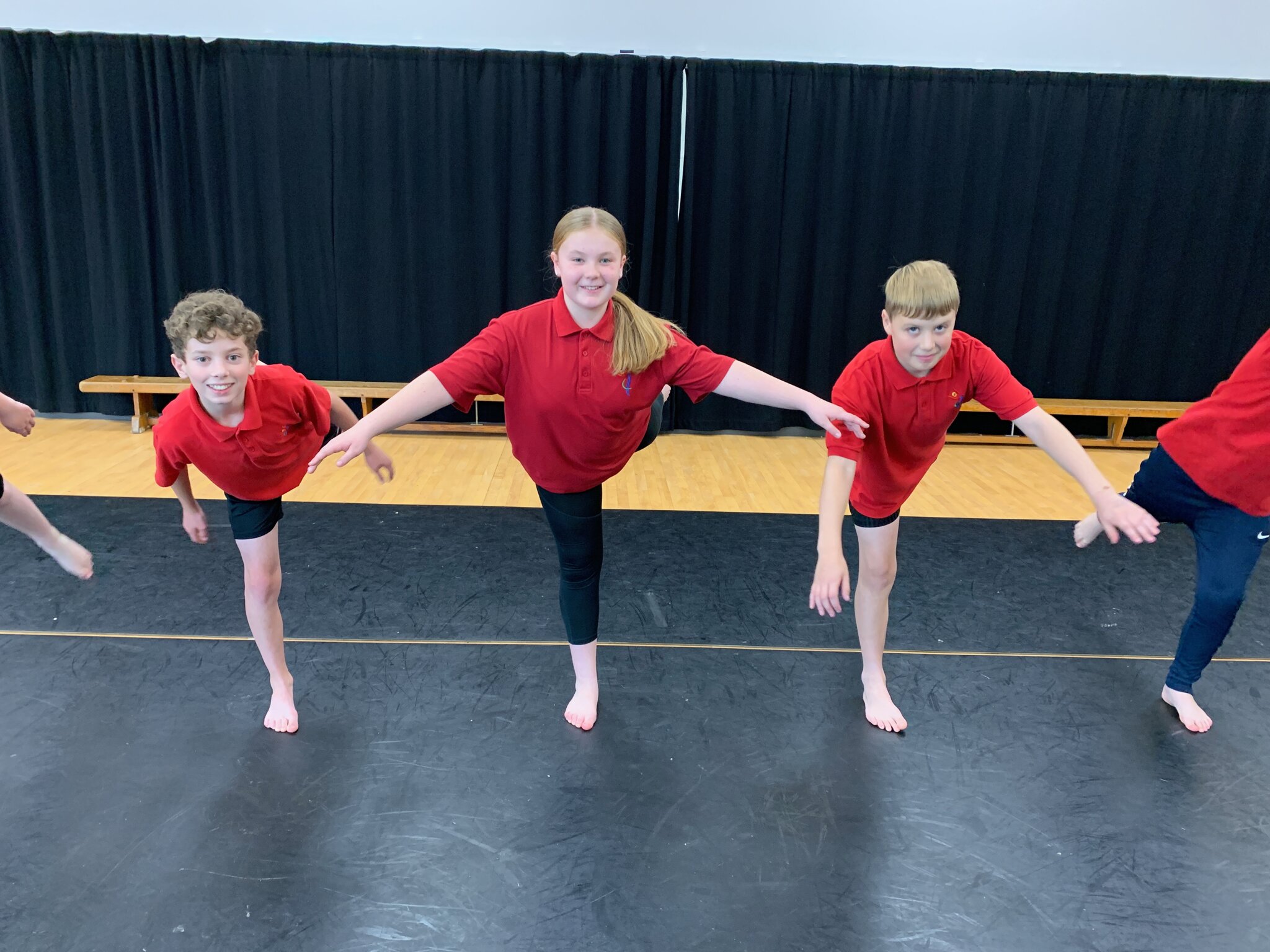
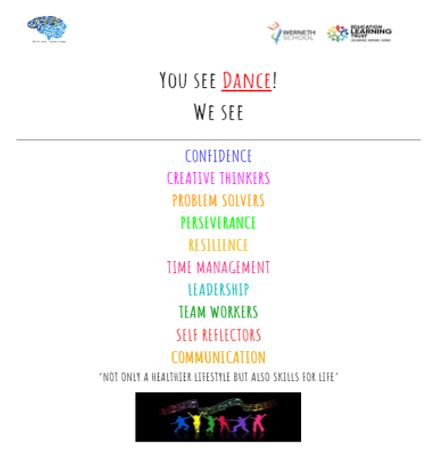
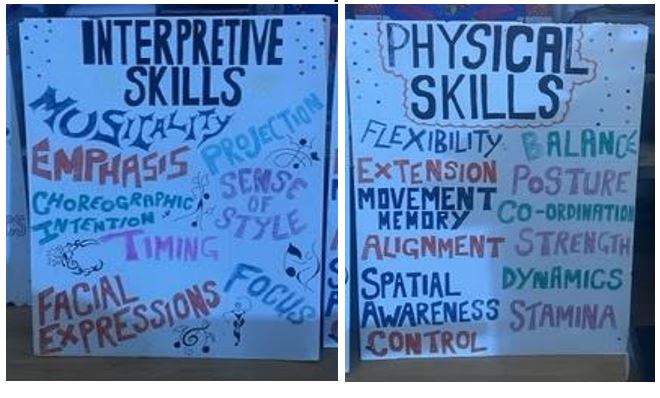

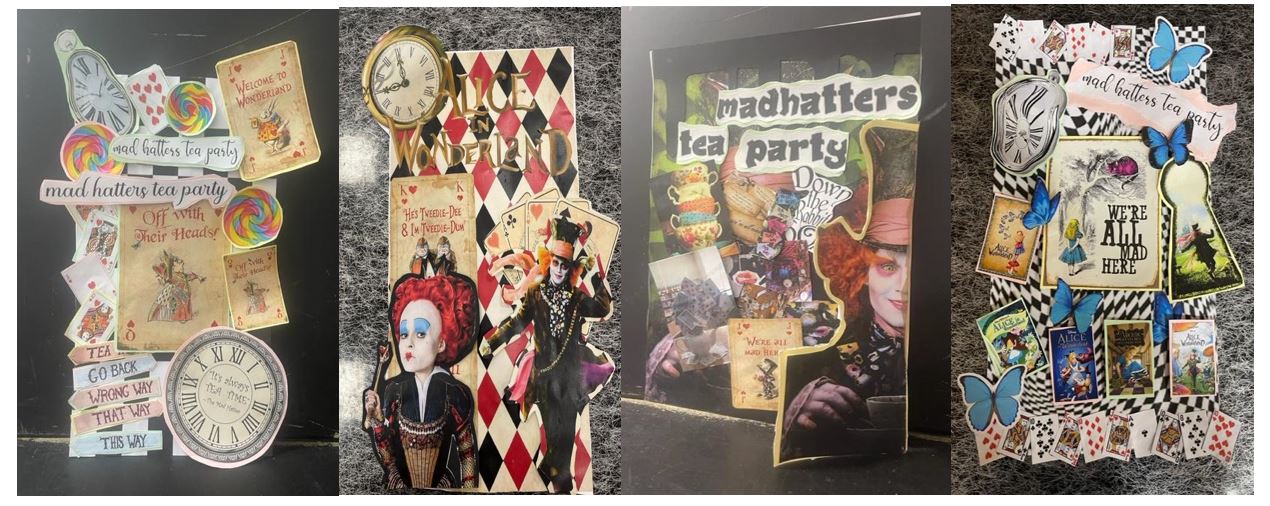
.png)